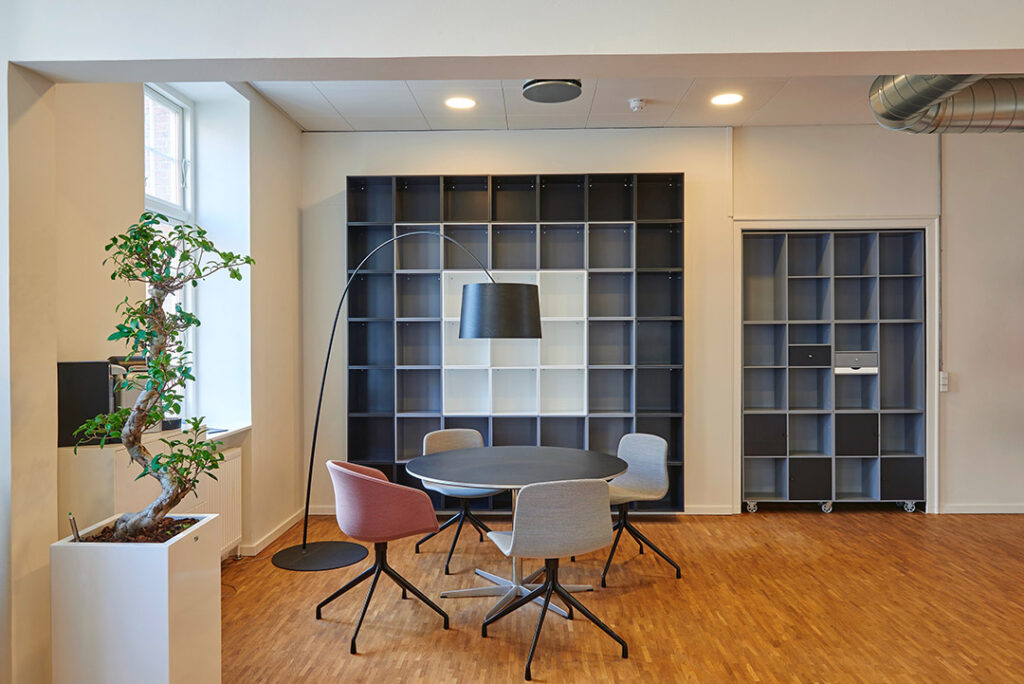Discover how to boost coworker performance and productivity with these 27 essential tips on the psychology of office design, creating an inspiring and efficient workspace.
In today’s fast-paced business environment, companies are constantly seeking ways to improve productivity, boost employee morale, and foster collaboration. One aspect that is often overlooked, yet plays a crucial role in achieving these goals, is office design. The psychology of office design encompasses the understanding of how the physical environment can affect employees’ cognitive and emotional well-being, and consequently, their performance at work. By harnessing the power of design, organizations can create workspaces that inspire creativity, encourage communication, and contribute to overall success.
There is a growing body of research that indicates the importance of office design in shaping employees’ experiences and performance. Factors such as color schemes, lighting, layout, and noise levels can all have a significant impact on an individual’s ability to focus, collaborate, and feel comfortable in their work environment. Furthermore, the right office design can help reduce stress, increase job satisfaction, and support a healthy work-life balance.
As employers increasingly recognize the value of investing in thoughtful office design, it becomes essential to understand the psychological principles that underlie effective workspaces. By taking into consideration the needs, preferences, and well-being of employees, companies can create environments that promote efficiency, innovation, and collaboration. Whether you are an office manager, a business owner, or a design professional, implementing these principles can have a lasting impact on the success of your organization.
In this comprehensive guide, we will explore 27 key tips for creating a psychologically sound office design that enhances coworker performance. Drawing on relevant examples and research findings, we will provide practical advice for optimizing the physical workspace to support employee well-being and productivity. By following these recommendations, you can transform your office into a space that not only looks great but also fosters a positive and effective work culture.
27 Key Tips with Relevant Examples:
- Open vs. Closed Layout: Research has shown that a balance between open and closed spaces is essential for productivity. Open layouts encourage collaboration, while closed spaces provide opportunities for focused work. Strike a balance by creating areas for both types of work, such as designated quiet zones and shared workstations.
- Optimal Lighting: Ensure that the office is well-lit, as poor lighting can lead to eye strain, headaches, and fatigue. Natural light is the best option, but if that’s not possible, consider using full-spectrum lighting that mimics daylight. Additionally, provide task lighting for individual workspaces to reduce glare and shadows.
- Biophilic Design: Incorporate natural elements, such as plants, water features, and natural materials, to reduce stress and improve air quality. Research has shown that biophilic design can enhance employee well-being and performance.
- Ergonomic Furniture: Invest in ergonomic chairs and desks that support proper posture and reduce the risk of musculoskeletal disorders. Adjustable furniture allows employees to customize their workspaces for maximum comfort and productivity.
- Color Psychology: Use color strategically to influence mood and behavior. For example, blue is associated with focus and productivity, while green promotes relaxation and creativity. Avoid overly bright or aggressive colors, as they can be distracting or cause discomfort.
- Noise Management: Excessive noise can be distracting and negatively impact performance. Incorporate sound-absorbing materials, such as acoustic panels or carpeting, and provide noise-canceling headphones for employees who need a quiet environment.
- Access to Amenities: Ensure that employees have access to essential amenities, such as restrooms, break rooms, and meeting spaces. A well-equipped office can improve efficiency and reduce stress.
- Flexible Workspaces: Encourage collaboration and creativity by providing a variety of workspaces, such as standing desks, lounge areas, and group workstations. This allows employees to choose the environment that best suits their needs and preferences.
- Clear Pathways: Ensure that pathways between workspaces and common areas are unobstructed and easily navigable. This can help to minimize distractions and improve overall workflow.
- Temperature Control: Maintain a comfortable temperature in the office, as extremes can negatively impact productivity and concentration. Provide individual temperature controls or establish a consensus for an optimal range.
- Personalization: Allow employees to personalize their workspaces with photos, plants, or other personal items. This can help to create a sense of ownership and improve overall job satisfaction.
- Encourage Movement: Design the office to promote movement and physical activity throughout the day. Consider incorporating standing desks, exercise equipment, or walking paths to support a healthy lifestyle.
- Cleanliness and Organization: A clean and well-organized workspace can boost productivity and reduce stress. Encourage employees to maintain their workspaces and provide ample storage solutions for a clutter-free environment.
- Artwork: Display artwork throughout the office to inspire creativity and promote a positive atmosphere. Choose pieces that reflect your company’s values and culture.
- Wayfinding: Implement clear signage and wayfinding solutions to help employees and visitors navigate the office with ease. This can reduce confusion and improve overall efficiency.
- Access to Nature: If possible, provide access to outdoor spaces, such as balconies or courtyards, where employees can take breaks and recharge. Exposure to nature can enhance well-being and productivity.
- Communal Spaces: Create communal areas where employees can gather, socialize, and collaborate. This can foster a sense of community and improve communication within the organization.
- Privacy Solutions: Provide employees with access to private spaces for confidential conversations or focused work. Consider incorporating phone booths or private meeting rooms into your office design.
- Technology Integration: Ensure that employees have access to the necessary technology and tools to perform their tasks efficiently. This includes reliable internet access, up-to-date software, and ergonomic peripherals.
- Accessibility: Design the office to be accessible and inclusive for employees with disabilities. This includes providing ramps, wider doorways, and adjustable workstations.
- Branding: Incorporate your company’s branding and values into the office design. This can help to reinforce your organization’s identity and create a sense of pride among employees.
- Aesthetics: A visually appealing office can improve morale and create a positive atmosphere. Choose cohesive design elements and materials that reflect your company’s culture and values.
- Environmental Considerations: Implement sustainable practices and materials in your office design to reduce your organization’s environmental footprint. This can include energy-efficient lighting, recycled materials, and waste reduction initiatives.
- Employee Feedback: Involve employees in the office design process by soliciting their input and feedback. This can help to ensure that the final design meets their needs and preferences.
- Room Acoustics: Consider the acoustics of each room to reduce noise pollution and improve overall comfort. Use sound-absorbing materials and partitioning solutions to minimize distractions.
- Visual Privacy: Ensure that employees have adequate visual privacy in their workspaces to maintain focus and reduce the potential for distractions.
- Air Quality: Maintain good air quality in the office to promote health and well-being. This can include proper ventilation, air filtration systems, and the use of plants to improve air quality.
In conclusion, the psychology of office design plays a crucial role in shaping employee performance and well-being. By implementing the 27 key tips outlined in this guide, organizations can create a workspace that fosters productivity, innovation, and collaboration. The right office design not only enhances the aesthetic appeal of the space but also positively impacts the overall success of the organization.
Furthermore, it is essential to recognize that office design is not a one-size-fits -all solution. The specific needs, preferences, and culture of your organization should guide your design choices. By involving employees in the decision-making process and regularly reassessing the effectiveness of your workspace, you can ensure that your office remains an engaging, supportive, and productive environment.
Ultimately, investing in thoughtful office design demonstrates a commitment to employee well-being and can significantly contribute to your organization’s long-term success. By considering the psychology of office design and applying these principles, you can create a space that not only looks great but also empowers your employees to reach their full potential.
Did you know? Businesses like to use our coworking space in Bangalore.
Learn about our office space in Bangalore on YouTube




